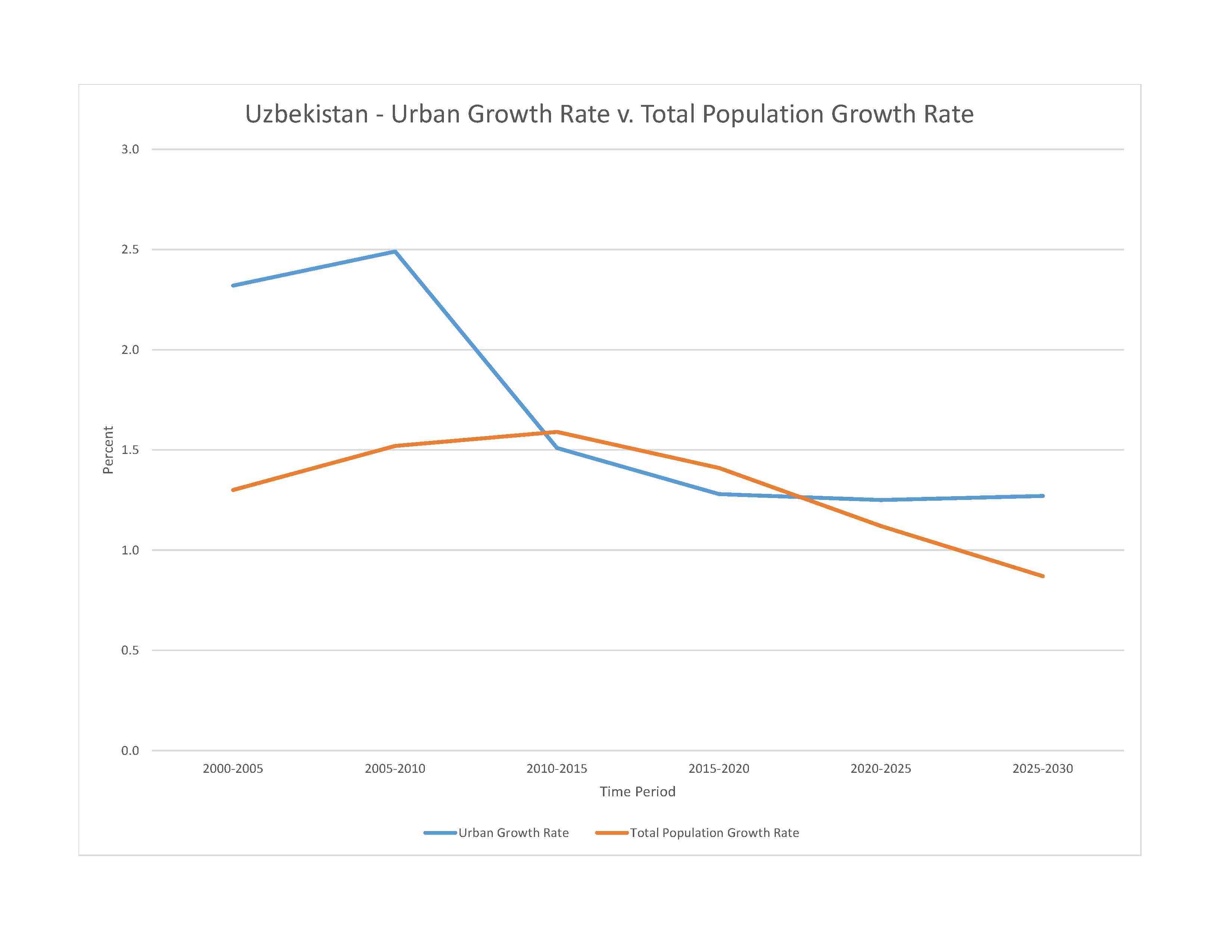
shrinkage of the Aral Sea has resulted in growing concentrations of chemical pesticides and natural salts; these substances are then blown from the increasingly exposed lake bed and contribute to desertification and respiratory health problems; water pollution from industrial wastes and the heavy use of fertilizers and pesticides is the cause of many human health disorders; increasing soil salination; soil contamination from buried nuclear processing and agricultural chemicals, including DDT
party to: Biodiversity, Climate Change, Climate Change-Kyoto Protocol, Climate Change-Paris Agreement, Comprehensive Nuclear Test Ban, Desertification, Endangered Species, Environmental Modification, Hazardous Wastes, Ozone Layer Protection, Wetlands
signed, but not ratified: none of the selected agreements
mostly mid-latitude desert, long, hot summers, mild winters; semiarid grassland in east
agricultural land: 62.6% (2018 est.)
arable land: 10.1% (2018 est.)
permanent crops: 0.8% (2018 est.)
permanent pasture: 51.7% (2018 est.)
forest: 7.7% (2018 est.)
other: 29.7% (2018 est.)
urban population: 50.5% of total population (2023)
rate of urbanization: 1.25% annual rate of change (2020-25 est.)

0% of GDP (2018 est.)
0.06% of GDP (2018 est.)
particulate matter emissions: 40.98 micrograms per cubic meter (2019 est.)
carbon dioxide emissions: 91.81 megatons (2016 est.)
methane emissions: 96.16 megatons (2020 est.)
municipal solid waste generated annually: 4 million tons (2016 est.)
fresh water lake(s): Aral Sea (shared with Kazakhstan) - largely dried up
Syr Darya (shared with Kyrgyzstan [s], Tajikistan, and Kazakhstan [m]) - 3,078 km; Amu Darya river mouth (shared with Tajikistan [s], Afghanistan, and Turkmenistan) - 2,620 km
note – [s] after country name indicates river source; [m] after country name indicates river mouth
Internal (endorheic basin) drainage: (Aral Sea basin) Amu Darya (534,739 sq km), Syr Darya (782,617 sq km)
municipal: 2.41 billion cubic meters (2020 est.)
industrial: 2.13 billion cubic meters (2020 est.)
agricultural: 54.36 billion cubic meters (2020 est.)
48.87 billion cubic meters (2020 est.)
NOTE: The information regarding Uzbekistan on this page is re-published from the 2024 World Fact Book of the United States Central Intelligence Agency and other sources. No claims are made regarding the accuracy of Uzbekistan 2024 information contained here. All suggestions for corrections of any errors about Uzbekistan 2024 should be addressed to the CIA or the source cited on each page.
This page was last modified 04 May 24, Copyright © 2024 ITA all rights reserved.